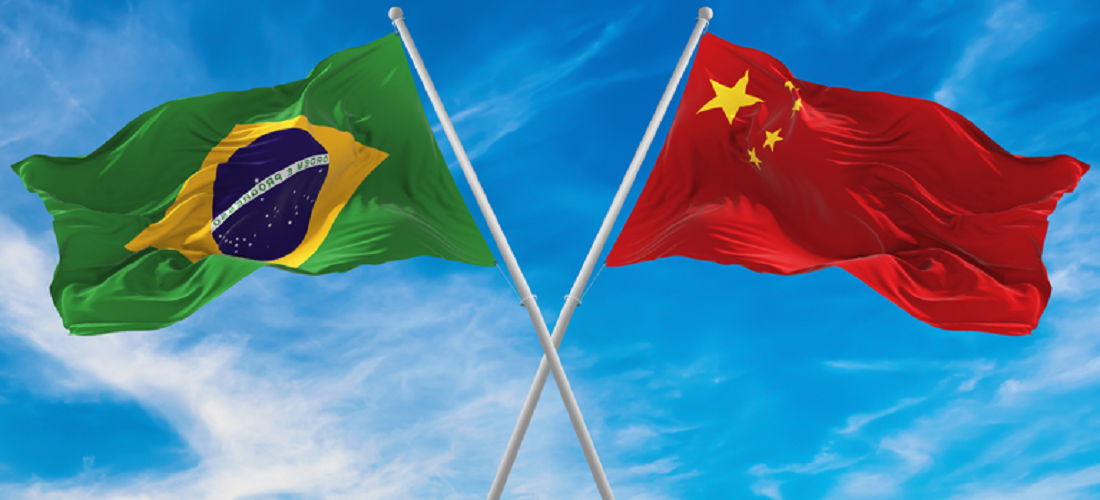
Brazil forecasts USD 90 bn in exports to China, despite looming crisis
Aug, 21, 2023 Posted by Gabriel MalheirosWeek 202335
Chinese President Xi Jinping arrives in Johannesburg for the Brics summit amidst a series of declining economic indicators in recent weeks, which pose significant risks for nations globally.
Brazil’s President Lula has reason to be vigilant: a substantial 30% of Brazil’s exports between January and July were destined to China, underscoring the nation’s substantial vulnerability to the fluctuations in the Asian giant.
Deteriorating conditions in the world’s second-largest economy started with a shift in expectations towards its growth, following the cessation of the zero-covid policy due to concerns about a pronounced slowdown. Retail sales, industrial production, and fixed asset investment all experienced slower growth rates in July compared to the prior month. Youth unemployment reached a record high of 21.3%. The prices of numerous products declined, entering deflationary territory—a sign of reduced commercial activity.
Exports have faced a third consecutive month of decline (-14.5% in July alone), while imports have decreased for the fifth consecutive month, backing up further economic slowdown prospects. Moreover, bankruptcies within the massive real estate sector, which typically drives a quarter of economic activity, raise worries about the potential contagion spreading to the financial sector.
Despite the economic crisis, the Brazilian government envisions that exports will remain substantial for its primary trading partner.
Tatiana Prazeres, the Secretary of Foreign Trade at the Ministry of Development, Industry, Commerce and Services, emphasizes two key points. Firstly, the deceleration in China’s growth rate warrants Brazil’s attention, given that the Chinese market accounts for nearly one-third of the country’s exports.
Secondly, “there is a risk of these grim analyses being overstated in the news. We’re discussing a slowdown in the world’s second-largest economy, but it’s a slowdown to 5%. China is still driving global growth.” In essence, a 5% growth rate in China is “highly significant and positive” for Brazil.
Between January and July, Brazilian exports to China surged by 6.9%, driven by shipment quantities, amounting to $58.7 billion. By comparison, global average export growth during the same period was a mere 0.2%.
Prospects for the second half of the year vary depending on commodities destined for the Chinese market. Consumer income in China is not growing as fast as it has been, and demand is shifting.
The outlook is more favorable for food commodities such as corn, poultry, pork, and cellulose.
Exports of commodities like iron ore and oil might encounter challenges. However, the Mdic’s Foreign Trade Secretary estimates that Brazilian iron ore exports will remain robust in terms of quantity due to its quality (iron content) relative to competitors.
Given this landscape, the Brazilian government foresees the possibility of closing the year with $90 billion worth of exports to China, constituting 27% of total exports amounting to $330 billion ($335 billion in 2022). Consequently, the sales projection for the Chinese market aligns with last year’s figures.
“Tatiana Prazeres emphasizes, “This is an impressive outcome, particularly considering the drop in prices for key commodities this year.”
Price declines were observed at 25% for oil exports, 16% for iron ore sales, and 9.6% for soybean sales from January to July.
The chart below shows the movement of containerized goods, measured in TEUs, as exports from Brazil to China and vice-versa. The data is from DataLiner.
Container movement Brazil-China | Jan 2019 – Jun 2023 | TEU
Source: DataLiner (click here to request a demo)
With the altered pace of China’s economic growth, two factors warrant monitoring. Firstly, China might theoretically amplify overseas investments to counterbalance the loss of domestic dynamism and diversify.
On the other hand, if the domestic market struggles to absorb domestically-produced goods, Chinese companies could become even more aggressive to offset this situation by bolstering sales in foreign markets through subsidies and dumping (selling below the value charged in the home market by exporting companies).
As a result, heightened scrutiny is focused on potential repercussions of increased imports from China, particularly within Brazil’s steel and chemical sectors, which are especially sensitive to this dynamic.
Source: Valor Econômico
To read the original news report, click on: https://valor.globo.com/opiniao/assis-moreira/coluna/brasil-preve-exportacoes-de-us-90-bi-para-a-china-apesar-da-crise.ghtml
-
Ports and Terminals
Aug, 18, 2020
0
July is best month this year for Vitória Port
-
Trade Regulations
Apr, 10, 2025
0
Trump Suspends Tariff Hikes for 90 Days, Slaps 125% Levy on China
-
Ports and Terminals
Mar, 01, 2019
0
Stevedores strike at Santos from today
-
Meat
Aug, 13, 2020
0
China alleges it found coronavirus in chicken imported from Brazil



